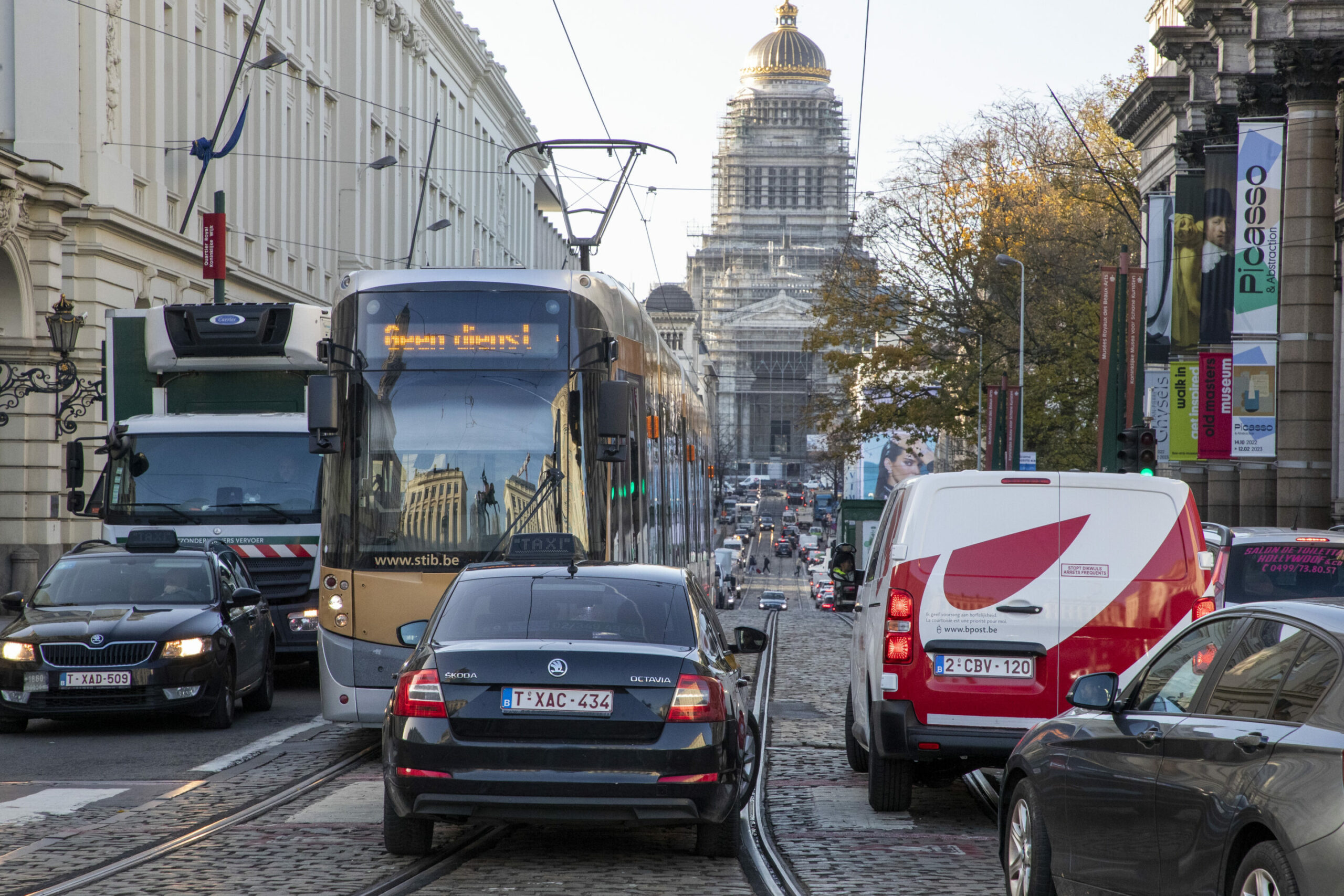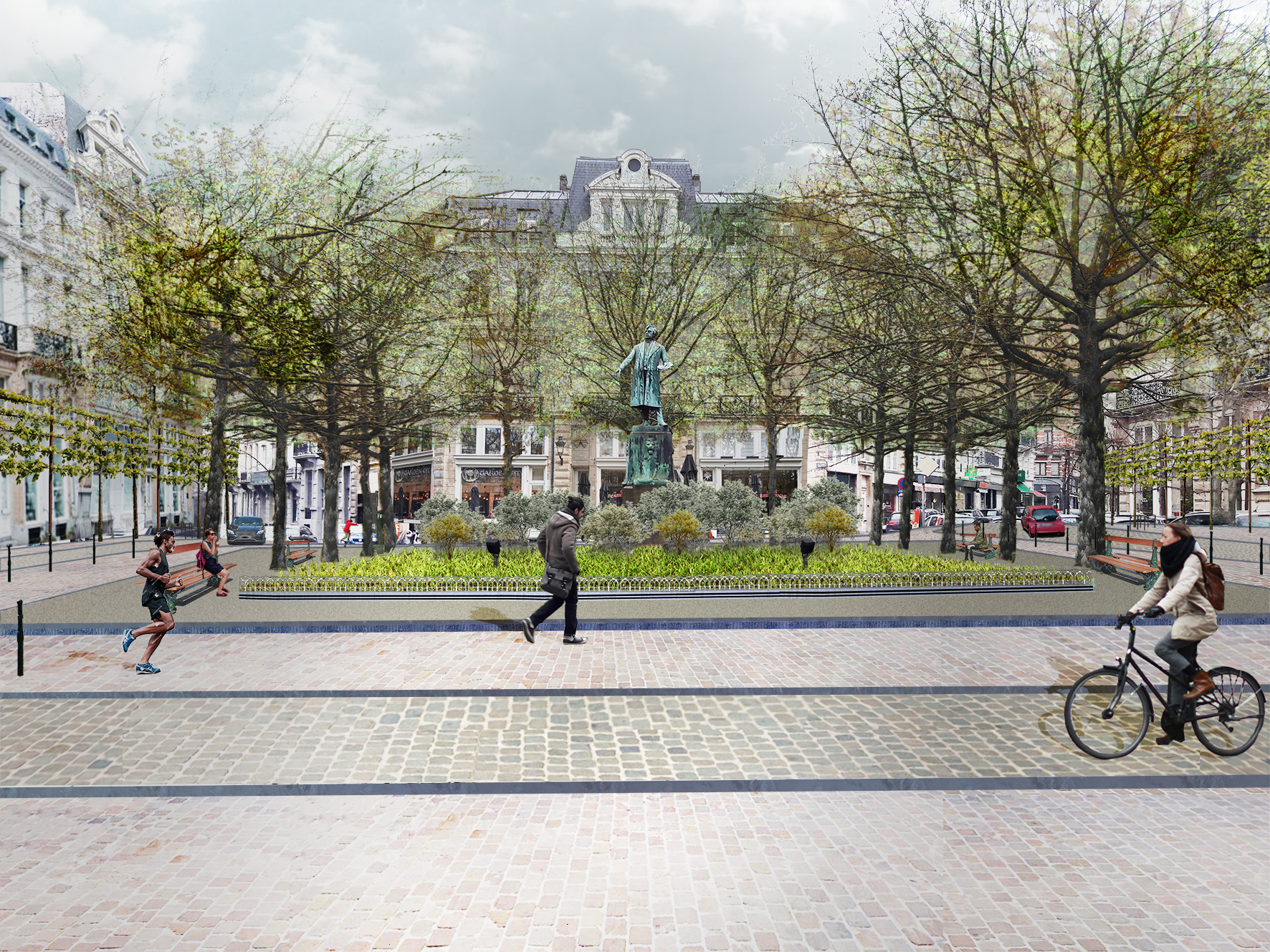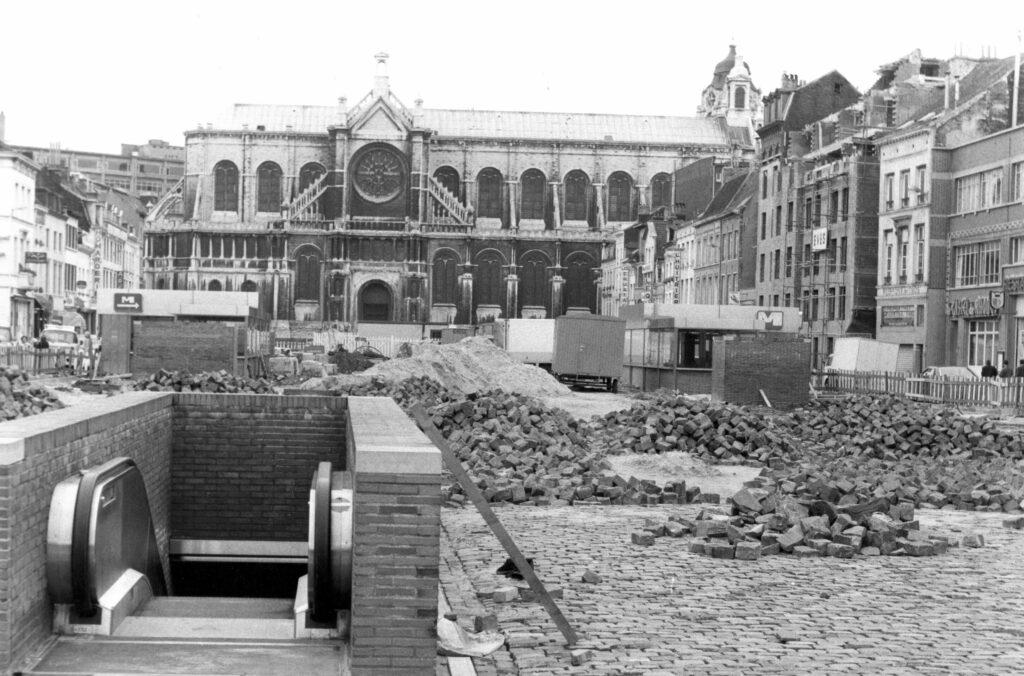Experts from Brussels' heritage agency have called for more attention to the current state of the region's heritage, arguing that iconic landscapes are too often subjected to drastic changes that ignore their value.
The majority of Brussels' urban design dates back to the 19th century when the construction of streets and squares was part of a comprehensive approach, creating "coherent urban wholes", aligning buildings and public spaces and shaping the city's identity. At the time, these were generally designed as shared, multifunctional spaces, giving active modes of transport a prominent place.
Despite standing the test of time, experts from the Royal Commission on Monuments and Sites (KCML) argue that this heritage is now under threat.
"The indiscriminate application of prescriptive and functional regulations, such as those of the Good Move mobility plan, leads to the rapid disappearance of valuable urban landscapes," the experts wrote in an open letter.
Lacking overall vision
The group pointed to several examples of recent projects in Brussels which they claim "ignore the heritage value of public spaces." The various redevelopments of Rue de la Régence, for example, have been more of a bane than a boon when it comes to preserving the landscape in the Royal Quarter, they said. "Each time, these projects concern a segment of this structuring axis, without an overall vision on the scale of the Royal Route."
Most of the key road is occupied by public transport stops, resulting in zigzag platforms, alternating pavement shapes, frequent markings, irregular cycle paths and random zebra crossings, they added. While the experts recognised that these changes fulfil functional requirements, they also "fragment the public space."

Rue de la Régence. Credit: Belga / Nicolas Maeterlinck
"The symmetrical composition and traditional materials of the major axis are essential for the image quality of the monumental perspective views towards the Palais de Justice and Place Royale."
The façade-to-façade construction of Avenue de Tervueren between Square Léopold II and the entrance to Parc du Cinquantenaire was also criticised. "The project's ambition is limited to applying contemporary design principles and regulations," they said.
"This will result in a new layout completely disconnected from the rest of the avenue which lacks both a vision for the entire route and a recognition of the heritage value of the entire avenue." Instead, the experts believe the street with its majestic landscape sequences and perspective views "deserves an approach in which heritage is one of the priority objectives."
'Irrevocable loss of heritage value'
In the open letter, the experts again denounced the planned redevelopment of Place de la Liberté, a neoclassical square that has been listed as heritage since 1983. The agency opposed bringing pavements to the street level, arguing this would "erase the square's urban forms, thereby leading to an irrevocable loss of heritage value."

Plans for the renewed Place de la Liberté. Credit: Ans Persoons Cabinet
When the permit was being granted, Ans Persoons, outgoing State Secretary for Town Planning and Heritage, recognised the "challenge" of combining heritage conservation with contemporary urban needs, such as accessibility and greening. Persoons' cabinet told The Brussels Times that it intends to discuss the matter with KCML Chair Stefaan Van Acker, and contacted him before the letter was published.
Van Acker, meanwhile, told Bruzz that the KCML is "certainly not against urban renewal," but that it is merely asking the next government to put heritage higher on the agenda and to be more closely involved in the initial design stages of new projects.
The experts concluded that there are several examples abroad of cities upgrading public spaces while preserving heritage. "London and its 'Streets for All' policy, in which heritage conservation, sustainability and accessibility of public spaces go hand in hand, is a good example."

